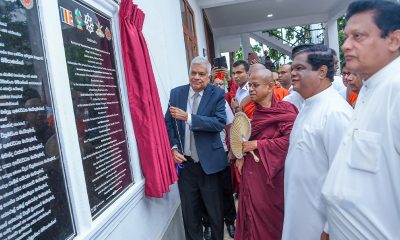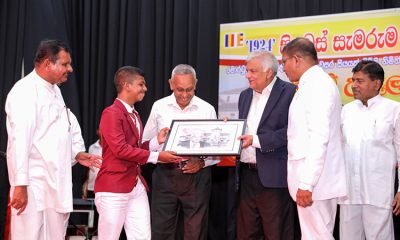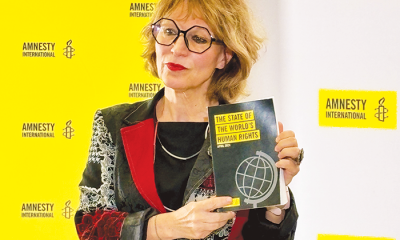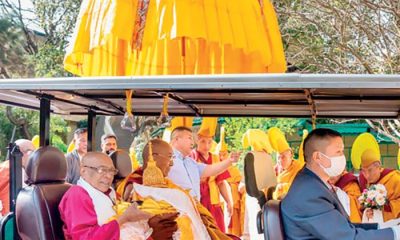Opinion
Demystifying Buddhism: Need of the hour?

by Dr Upul Wijayawardhana
Mystification is undoubtedly one of the most effective techniques adopted by all religions to ensure that their followers toe the line. After all, who wants to go against religion and face eternal damnation? However, the world has moved on since the inception of all religions and now even scientists agree that there is nothing permanent; not even the universe! By the way, impermanence as a key concept was introduced by the Buddha more than two and half millennia ago. At the moment there is global concern over yet another creation of the human mind: Artificial Intelligence!
Some industry leaders are warning that AI would wipe out humanity, joining nuclear war and pandemics which are the leading contenders to do the same. Geoffrey Hinton, so-called ‘Godfather of AI’ resigned from his job at Google stating that the tools he helped create may be used to end civilisation. AI language tools such as ChatGPT are already being used by students to cheat but would someone go a step further and use similar tools to weaponise ‘fake news’ or develop deadly chemical weapons? One can argue that religion can play an important moderating role in preventing such things happening but, on the other hand, it could be questioned whether they can do so if religions are removed from reality by mysticism?
Perhaps, all religions need demystification but I shall confine myself to Buddhism as it is the only religion I know a bit about. Further, I fear any criticism of other religions may earn me the reputation of someone attempting to promote religious discord. We live in a world, which is becoming increasingly intolerant of free speech whilst clamouring for the same! Oxford Union, once the bastion of free speech, nearly stopped Philosophy professor Kathleen Stock from expressing her view that trans women were not women.
Having failed to cancel the event, transgender activists attempted to sabotage her presentation. Interestingly, they did not attempt to challenge her views instead, perhaps because they are bereft of facts! Though we Buddhists do not do so often, the Buddha gave us the freedom of thought and promulgated the Dhamma by means of discussion. The Buddha was in search of the nature of reality and it perplexes me why and how the religion built around those teachings is full of mysticism. Though it may have served some purpose in the past, my contention is that the time is ripe for demystification.
The month of Poson is of special significance to us, Sri Lankan Buddhists, as according to ancient chronicles Buddhism was formally introduced, on the full moon day of this month 2270 years ago by Arahant Mahinda who was the son and emissary of Mauryan Emperor Ashoka. Though it is very likely that Buddhism spread to Sri Lanka from India much earlier, Arahant Mahinda’s visit resulted in the embracing of Buddhism by King Devanampiyatissa and Sri Lanka becoming a Buddhist country, officially. Arahant Mahinda established Bhikkhu Sasana and as there was a clamour to establish Bhikkhuni Sasana, his sister Sanghamitta followed six months later, carrying with her a sapling of the Bodhi tree, under which the Buddha attained enlightenment. The famous writer H G Wells in the chapter, “The Rise and Spread of Buddhism” in his 1920 book “The Outline of History” refers to this as follows:
“In Ceylon there grows to this day a tree, the oldest historical tree in the world, which we know certainly to have been planted as a cutting from the Bodhi-Tree in the year 245 BC. From that time to this it has been carefully tended and watered.”
Whilst Sanghamitta story tells us that she travelled by land and sea, landing in Jaffna, Arhant Mahinda, who came to Sri Lanka with seven others, including two close relatives; Sumana Samanera, the son of Sanghamitta and Bhanduka Upasaka, the son of his maternal aunt’s daughter, is supposed to have arrived by supernatural means. Is this another instance of mystification! Even if one assumes that Arahants had developed the supernatural power of teleportation, it does not explain how a samanera and upasaka travelled, as an Arahant is not likely to have the ability tag along another person in teleportation.
In fact, Arahant Mahinda’s visit was a much-planned visit and was postponed till the death of King Mutasiva as it was felt that the aging king would not be able to grasp the complex concepts of Buddhism. This makes it very likely that the dramatic meeting described in ancient texts is nothing but a mystification. Anyway, how Arahant Mahinda arrived with others does not matter. What is important is that there is plenty of archaeological evidence to prove that both Arahants Mahinda and Sanghamitta lived in Sri Lanka till their deaths, serving our ancestors. Therefore, they deserved to be remembered on Poson and Unduvap Poya Days, respectively.
The Buddha showed us the way to overcome the sense of dissatisfaction that pervades all aspects of life and also the power of the mind. He showed us the way we could develop our mind and introduced the concept of mindfulness. He showed the path for ultimate detachment. What happened subsequently was converting this Dhamma to a religion by enveloping it in rituals and mysticisms; very practices denounced by the Buddha.
Instead of accepting the Buddha as a normal human being but with an exceptional intellect, he was made supernatural by mystifying his life. He walked immediately after his birth and said it was his last birth. This is mysticism mixed with predetermination but what follows is the truth. In spite of all the luxuries, with increasing dissatisfaction with life, Prince Siddhartha leaves lay life in search of the underlying cause of dissatisfaction. He experiments with extreme torture to the body, a method very popular among sages at the time, which he finds of no use and discovers the Middle Path, the Four Noble Truths and the Noble Eightfold Path.
The Buddha walked the length and breadth of India barefoot, washing his feet himself, when he entered a house. This message of simple living dedicated to the service of others is distorted and some of the Sangha today live in the lap of luxury and indulge in every activity the Buddha advised them against.
The Buddha’s Dhamma explains a path to tread on, and studying how he explored the mind to arrive at this itself gives so much academic satisfaction. Teaching this would ennoble our youth but what is often heard in Bana preachings or lectures are mystical stories or gross distortions, the best example being Dana: giving is a means to getting rid of attachment but is portrayed as a means of guaranteed returns thus increasing greed. I can go on and on.
If Buddhism is to survive, we need to understand and practise what the Buddha taught. The first step in this process is demystifying it so that we may understand the true nature of things.
Opinion
East awaits PM Modi’s visit

Former Vice Chancellor, Eastern University
President, Batticaloa District Chamber of Commerce, Industries, and Agriculture (BDCCIA)
It has been announced that Prime Minister of India Narendra Modi will be visiting Sri Lanka this week
It is also understood that the Prime Minister will meet the Sri Lankan leaders and hold formal meetings for discussion and action. There will likely be many issues on the agenda.
However, in a country with centuries-old ties to India and a significant population with strong affiliations to the Indian people, it will be a pity if the Prime Minister were to limit his engagements to government representatives alone. While parliamentarians may be an obvious choice for meetings, they have already engaged with Indian counterparts frequently. It would be more relevant for the Prime Minister to meet with representatives from business sectors, trade unions, and chambers of commerce to gain a broader and more practical understanding of Sri Lanka’s economic landscape and its relations with India.
The Eastern Province, in particular, has a special claim for attention. The Indian government has previously indicated its commitment to developing the East, and it is crucial to have direct discussions with communities in the Eastern Province to understand their issues and the agreements India is willing to pursue in relation to development. If this does not happen, the Eastern Province risks being, once again, misled by promises that never materialise—a mirage that keeps its people hopeful but ultimately unfulfilled. The East has long remained in the blind spot of development, acknowledged but never truly engaged, resulting in rising poverty and unemployment. It desperately needs a concrete programme for meaningful restoration and growth.
Batticaloa, in particular, lacks both the political backing that Ampara enjoys and the economic advantage of Trincomalee, which benefits from its harbour. Without targeted intervention, Batticaloa and other underserved areas in the East will continue to lag behind.
India needs to be more aware of the Eastern Province’s potential if it is to play a constructive role in its development. The region is naturally gifted with abundant resources, making it highly suitable for agriculture, fisheries, dairy farming, and tourism. It has vast lagoons, water bodies (Thonas) that connect to the sea, forests, and coastal ecosystems—elements that create immense economic potential. India has expertise in all these sectors, and tourism, in particular, could thrive with increased engagement, given the presence of Hindu temples of cultural and religious significance to the Indian population.
The dry zone, which dominates the North and East, shares similarities with Indian landscapes, making it ideal for cultivating crops and flowers with mutual trade agreements. Expanding fisheries within the 200-mile exclusive economic zone in the East, as well as harnessing ocean floor resources, presents a valuable opportunity for both India and the Eastern Province. Additionally, the large cattle population in the region could greatly benefit from India’s expertise in dairy production, as India is the world’s largest milk producer. The vast lagoons in the East rival those of Kerala, offering significant potential for inland tourism with boat services and associated activities.
The scope for development is clear, but what remains uncertain is India’s real commitment as a development partner, as stated by the Sri Lankan government. The Prime Minister’s visit must engage with all communities to ensure transparency and assurance that the East will not be left behind.
It is also crucial for the Eastern Province to be treated with the same level of importance as the North. The North has its own dedicated branch of the Indian High Commission, and the Malayagam community has established formal links with India. However, the Eastern Province appears to be the forgotten limb in this equation, and this neglect must be addressed.
The Eastern Province also continues to grapple with unresolved issues from the past conflict, including physical and cultural encroachments. The region was separated from the North through a court ruling two decades after the Indo-Sri Lanka Agreement’s merger of the North and East, yet it has never had the referendum required by law. India’s interests in Trincomalee and its harbour are well known, but the larger population of the Eastern Province is still awaiting India’s engagement in the region’s overall development. The people in the East want India to be truly committed to facilitating progress in their region, and will eagerly look to see that its actions reflect that commitment.
Let us hope that this visit brings a mirror of true reflection and action, rather than be another mirage of unfulfilled promises.
by Prof. Emeritus Thangamuthu Jayasingam
Opinion
Truth and Reconciliation Commission for Sri Lanka: Issues and challenges
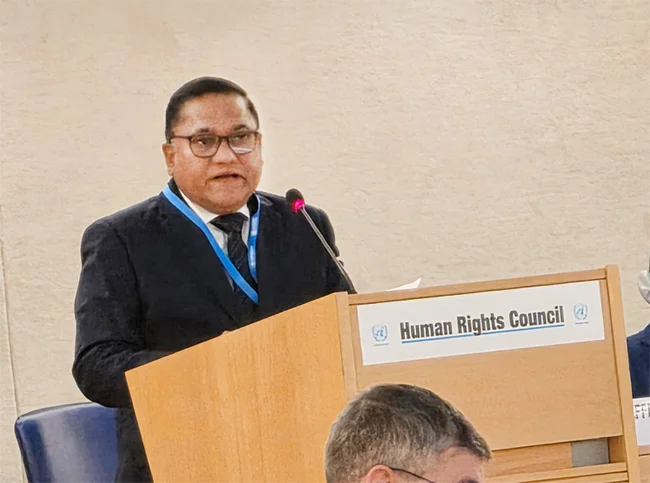
D. Phil. (Oxford), Ph. D. (Sri Lanka);
Rhodes Scholar, Quondam Visiting Fellow of the Universities of Oxford, Cambridge and London;
Former Vice-Chancellor and Emeritus Professor of Law of the University of Colombo.
I. The Domestic and International Setting
The establishment of a Truth and Reconciliation Commission is a matter of lively interest across our society at this time. Developments a few days ago at the international level make this issue immediately relevant to the national interest of Sri Lanka.
The Minister of Foreign Affairs, Mr. Vijitha Herath, in his address at the 58th Session of the Human Rights Commission in Geneva in February this year, expressed interest in “the contours of a strong truth and reconciliation framework” and committed his government to “strengthening the work” in this field.
Current preoccupation with this concept has both a domestic and an international impetus. Within the country, the overwhelming confidence placed by the people of the North and East, as part of an Islandwide avalanche, in the current National People Power administration, impels the Government to focus, as a matter of priority, on national healing and reconciliation.
Beyond our shores, the expectation is equally urgent. The United Nations Human Rights Council, over the last decade, has adopted no fewer than 6 Resolutions on Sri Lanka. The pivotal Resolution, co-sponsored by Sri Lanka in 2015, called for a Commission for Truth, Justice, Reconciliation and Non-Recurrence. Subsequent Resolutions, expressing concern over lack of progress and the need for international accountability, introduced a new – and potentially hazardous – dimension. This consisted of the creation of a uniquely intrusive mechanism to gather and analyse evidence relating to Sri Lanka as a launching pad for further action in international tribunals.
Against the backdrop of these initiatives, a series of legislative measures have been taken in Sri Lanka – principally the enactment of the Office of Missing Persons Act of 2016, the Office for Reparations Act of 2018 and the Office of National Unity and Reconciliation Act of 2024. However, a hiatus remains with regard to the overarching mechanism of a Truth and Reconciliation Commission.
In attempting to complete the edifice, it is natural that policy makers in Sri Lanka should seek to derive assistance from the experience of South Africa, the home of probably the best-known Commission of this kind in the world. Inadequately and superficially researched, the proposed Sri Lankan legislation, published in the Gazette of 29 December 2023, suffers by comparison with legislation in other countries: it is marred by glaring omissions, and reflects shallowness of understanding of the aspirations which undergird successful instruments of reconciliation in our time.
II. The South African Experience Compared
The overlapping and contrasting features of Sri Lankan and South African legislation warrant close analysis.
(a) Territorial Application
There is a crucial difference in this regard. The mandate in South Africa embraces the whole nation without qualification (Preamble and section 3 of Act No. 34 of 1995). By contrast, the proposed mandate in Sri Lanka is operative throughout the Island, but only where the atrocities in question “were caused in the course of, or reasonably connected to, or consequent to the conflict which took place in the Northern and Eastern Provinces during the period 1983 to 2009, or its aftermath” (section 12(i)).
This is a limitation which cannot but affect the completeness of the Commission’s work. For instance, among the Commission’s powers is that of applying to a Magistrate “to excavate sites of suspected graves or mass graves and to act as observers at such excavations or exhumations” (section 13 (2c)). This is relevant also to areas outside the Northern and Eastern Provinces, and curtailment of the Commission’s mandate detracts from the overall balance and value of its work.
(b) Structural Framework
The South African legislation envisages 3 Committees specifically established alongside the Commission – the Committee on Human Rights Violations, the Committee on Amnesty and the Committee on Reparation and Rehabilitation. Each of these Committees has a statutory mandate and function, the role of each being clearly defined in relation to the Commission.
The Sri Lankan Bill is much less precise and clear-cut.The corresponding provision empowers the Commission to appoint panels consisting of not less than 3 members, the members being assigned to panels by the Chairperson of the Commission (section 7(2)). Unlike in South Africa, there is no indication of either the number of panels, or the subject matter entrusted to each panel. A tighter conceptual scheme, with explicit definition of identity and scope, is desirable at this conjuncture.
(c) Reconciliation and the Judiciary
Investigation which the Commission in Sri Lanka is authorised to undertake encompasses a wide range of activity including “extrajudicial killings, assassinations and mass murders” (section 12(g)(i)), “acts of torture” (section 12(g)(ii)) and “abduction, hostage taking and enforced disappearances” (section 12(g)(iv)). These are grave crimes in respect of which proceedings are instituted before the regular courts. In this event, should judicial proceedings, of a civil or criminal nature, be suspended until conclusion of the Commission’s investigations, or vice versa, or should they take place concurrently?
This is a matter of obvious practical importance which receives detailed consideration in South Africa, but not at all in Sri Lanka. For instance, where the person seeking amnesty before the relevant Committee in South Africa has a civil action in court pending against him, he may request suppression of the proceedings pending disposal of the application before the Committee (section 19(6)). The court may, after hearing all relevant parties, accede to this request. Similarly, a criminal action may be postponed in consultation with the Attorney-General of the relevant Province. These provisions serve the salutary purpose of averting the risk of conflicting orders by the courts and a Committee of the Commission in simultaneous proceedings. The Sri Lankan Bill fails to make any provision against this unacceptable contingency.
(d) Protection and Compellability
Discovery of truth requires the compulsory attendance of witnesses and the production of evidence before the Commission or its delegate. There is a the equally critical need, in subsequent proceedings, to protect witnesses against incrimination by testimony obtained through compulsion. These are competing objectives which need to be reconciled equitably.
This is achieved by the South African legislation: a person will be compelled to answer or produce evidentiary material having the potential to incriminate him, only if the Commission is satisfied that this course of action is “reasonable, necessary and justifiable” (section 31(2)). Moreover, the vital proviso is attached that the incriminating answer or evidence is inadmissible in criminal proceedings against the person providing it. This is a satisfactory result.
The position in Sri Lanka is quite otherwise. There is provision for the Commission to summon any person or to procure material (section 13(t) and (u)). This exists side by side with provision empowering the Attorney-General “to institute criminal proceedings in respect of any offence based on material collected in the course of an investigation by the Commission” (section 16(2)). Vulnerability is enhanced by the removal of protection conferred by the Evidence Ordinance (section 13(y)). In stark contrast with the position in South Africa, there is singular absence of any provision against self-incrimination in Sri Lanka.
(e) Amnesty
The basic purpose of Truth and Reconciliation Commissions around the world is to enable victims to come to terms with a deeply scarred past and to face the future with dignity and self-assurance. This is the gist of the Greek concept of Katharsis, or purging of the soul. Through full and candid disclosure, involving unburdening and relief, comes the expiation of guilt.
This is the context in which the idea of amnesty occupies a central place in the scheme of reconciliation. The Committee on Amnesty is the centrepiece of South African legislation. The primacy of its function is underlined by the provision that “No decision, or the process of arriving at such a decision, of the Committee on Amnesty shall be reviewed by the
Commission” (section 5(e)). The status of this Committee is unique, standing as it does apart from, and indeed above, the other Committees. An application for amnesty succeeds in South Africa if there is genuine contrition manifested in complete disclosure of all relevant facts (section 20(i)).
Sri Lankan law takes an entirely different course. Although the proposed Bill postulates, as one of the main objectives of the Commission “providing the people of Sri Lanka with a platform for truth telling” (section 12(d)), no provision whatever is made for conferment of amnesty in consequence of uninhibited disclosure. At the core of the law, there is a policy contradiction, with practical implications.
III. Political Will
Apart from these infirmities, cumulatively worrying, there is a negative factor of far greater importance.
When the draft legislation in Sri Lanka was published in January 2024, the response was less than unreservedly enthusiastic. This was mainly because of lingering doubts about the strength of political will underpinning this initiative. By no means the initial overture, this was yet another step in a long and disheartening sequence of events. The Lessons Learnt and Reconciliation Commission, the Udalagama Commission and the Paranagama Commission represented together a sterile endeavour, for well over a decade, to address the salient issues. The Bill impliedly concedes this. What is of particular significance is the inclusion, in Part VIII of the Bill, of a set of provisions entitled “Implementation of the Commission’s Recommendations”. The key provision requires the setting up of a Monitoring Committee (section 39) consisting of the Secretaries of 5 Ministries and 6 others, to submit to the President every 6 months reports which “shall include the reasons for non-implementation” (section 40(9)) by relevant entities. This is hardly likely to engender a high threshold of confidence.
A critical component of political will is commitment to community participation. This was much in evidence in South Africa even before Nelson Mandela’s accession to the Presidency. In my academic career, during visits to the University of the Witwatersrand and the University of Cape Town on lecture tours, I observed at first hand, the sustained efforts by leaders of South African academia to convince the corporate sector that structural change is the preferable alternative to unbridled anarchy.
As Minister of Justice, Ethnic Affairs and National Integration in the Government of President Chandrika Kumaratunga, I interacted closely with my counterparts,Dullah Omar, Minister of Justice and Mandela’s personal lawyer and Valli Moosa, Minister of Constitutional Affairs, who even used pictorial images, rather than the printed word, to convey the central message of reconciliation to the vast mass of the people, especially in the rural hinterland. This was very much the wind beneath the wings, and supplied the thrust for intense community involvement.
IV. Role of an Icon
Rising above all these considerations is a circumstance which was brought home to me vividly during my participation, as Minister of Foreign Affairs, in the Commonwealth Summit in Kigali, Rwanda, in 2022. On the sidelines of this event, I had the benefit of a discussion with my South African counterpart, Ms. Naledi Pandor, at the time Minister of International Relations and Cooperation. She shared with me her perspective that, whatever the South African process accomplished, was in considerable measure attributable to the towering stature of Archbishop Desmond Tutu who enjoyed remarkable prestige across the nation. An emblematic figure as the visible symbol of the process is, therefore, vital, the ideal choice probably being a personality bereft of a prominent political profile. Qualities of leadership are, in practice, of even greater value than the structural characteristics of the Commission.
V. Restorative Justice
The abiding inspiration of reconciliation mechanisms arises from the idea of restorative, as opposed to retributive, justice; but this concept has intrinsic limits. In the South African case, pride of place was given to sincere truth telling which would overcome hatred and the primordial instinct for revenge. The vehicle for giving effect to this was amnesty. Not infrequently, however, this opportunity was spurned. Despite the personal intervention of Mandela, former State President P. W. Botha was adamant in his refusal to appear before the Commission which he denounced as “a fierce unforgiving assault” on Afrikaaners. This sentiment struck a compliant chord in many leaders of the security and military establishment under the apartheid regime. Among them were General Magnus Malan, former Minister of Defence, and General Johan van der Merwe, former Commissioner of the South African Police.
Contemptuous refusal to appear before the Commission led to criminal prosecution. Eugene de Kock, commander of a police death squad, was convicted on multiple counts of murder. An interesting case is that of Security Branch officer, Joao Rodrigues, who was charged with murder 47 years after the death of anti-apartheid activist, Ahmed Timol, in police custody. When repentance and amnesty failed, criminal responsibility took over.
At the heart of the discourse is interplay among the ideas of truth, justice and reconciliation. Search for the right balance is the perennial dilemma. The basic conflict is between amnesty and accountability. A legitimate criticism of the South African experience is that it tended, on occasion, to give disproportionate attention to the former at the expense of the latter. It did happen that grave crimes went unpunished, leaving victims, after the trauma of reliving the past, profoundly unfulfilled.
Diverse cultures offer an array of choices. In Argentina, the power to grant amnesty was withheld from the Commission. In Colombia, disclosure resulted not in total exoneration but in mitigation of sentence. In Chile, prosecutions were feasible only after a prolonged interval since the dismantling of Augusto Pinochet’s dictatorship. In Peru, individual sanctions were studiedly relegated to major economic and societal transformation in the wake of the ravaging conflict with Sendero Luminoso (Shining Path).
An eclectic approach, affording the fullest scope for selection and imaginative adaptation, is the way forward. There is no size that fits all.
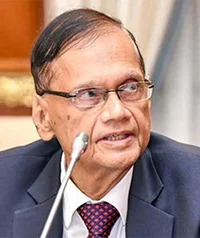
By Professor G. L. Peiris
Opinion
Gnana Moonesinghe- an appreciation
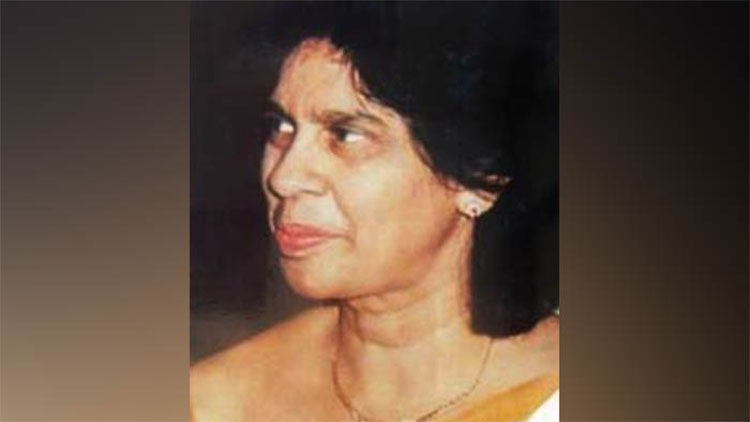
It was just over one month ago that Gnana Moonesinghe departed from this world after having lived a very fruitful life on this earth. It was indeed a privilege that Mallika and I came to know Gnana after we moved into Havelock City. During that short period, we became very close friends, along with another mutual friend of ours, Dr. Disampathy Subesinghe, who, too, was living in the same Tower after having come from the United Kingdom. Unfortunately, Dr. Subesinghe pre-deceased Gnana.
Gnana was a graduate of the University of Ceylon, Peradeniya having been at Peradeniya during the halcyon days of that University.
She tied the nuptial knot with Mangala Moonesinghe who was a very respected politician and who served as our High Commissioner in London and New Delhi. She was an exceptional hostess while being the wife of the High Commissioner. It was a very interesting coincidence that our second son, Anuke, had won a trip to New Delhi having won an All-Island essay competition about India while still a schoolboy. The team had met the High Commissioner and Gnana when they attended a reception hosted at the High Commission, where Gnana had been an exceptional hostess to the young boys.
Gnana was a member of many organisations and played an important role in all of them. In addition to these activities, she contributed to newspapers on varied subjects, especially relating to good governance and reconciliation. She was a keen player of scrabble and rummy with her friends and of course entertaining them to a meal if played at her home.
It was while in New Delhi that Gnana wrote and published a book titled “Thus have I heard…”in the year 2009 and she presented a copy to me). This book gives lucid descriptions of the Buddhist teachings of the Buddha and the places of interest in India with historical descriptions of what transpired in each place.
Gnana had brought up a very good daughter Avanthi and a son Sanath. She doted on her grandchildren and in turn they loved her. It was Avanthi and her husband, Murtaza who looked after Gnana during the last stages of her life.
We will miss Gana’s hospitality, soft spoken conversations, and the love that she used to emanate towards her friends.
HM NISSANKA WARAKAULLE
-

 Sports2 days ago
Sports2 days agoSri Lanka’s eternal search for the elusive all-rounder
-

 Features6 days ago
Features6 days agoCelebrating 25 Years of Excellence: The Silver Jubilee of SLIIT – PART I
-

 Business6 days ago
Business6 days agoCEB calls for proposals to develop two 50MW wind farm facilities in Mullikulam
-
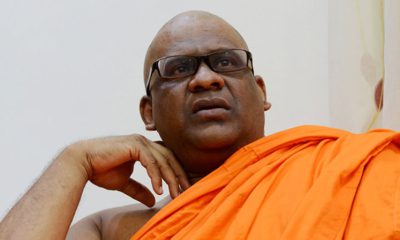
 News3 days ago
News3 days agoGnanasara Thera urged to reveal masterminds behind Easter Sunday terror attacks
-
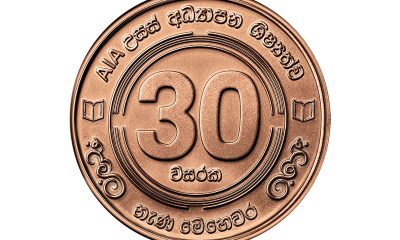
 Business4 days ago
Business4 days agoAIA Higher Education Scholarships Programme celebrating 30-year journey
-
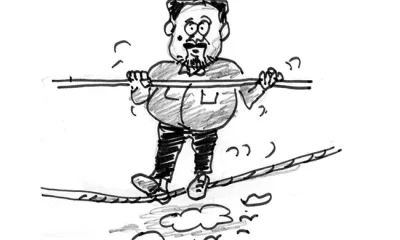
 Features6 days ago
Features6 days agoNotes from AKD’s Textbook
-

 News2 days ago
News2 days agoComBank crowned Global Finance Best SME Bank in Sri Lanka for 3rd successive year
-

 Features2 days ago
Features2 days agoSanctions by The Unpunished






